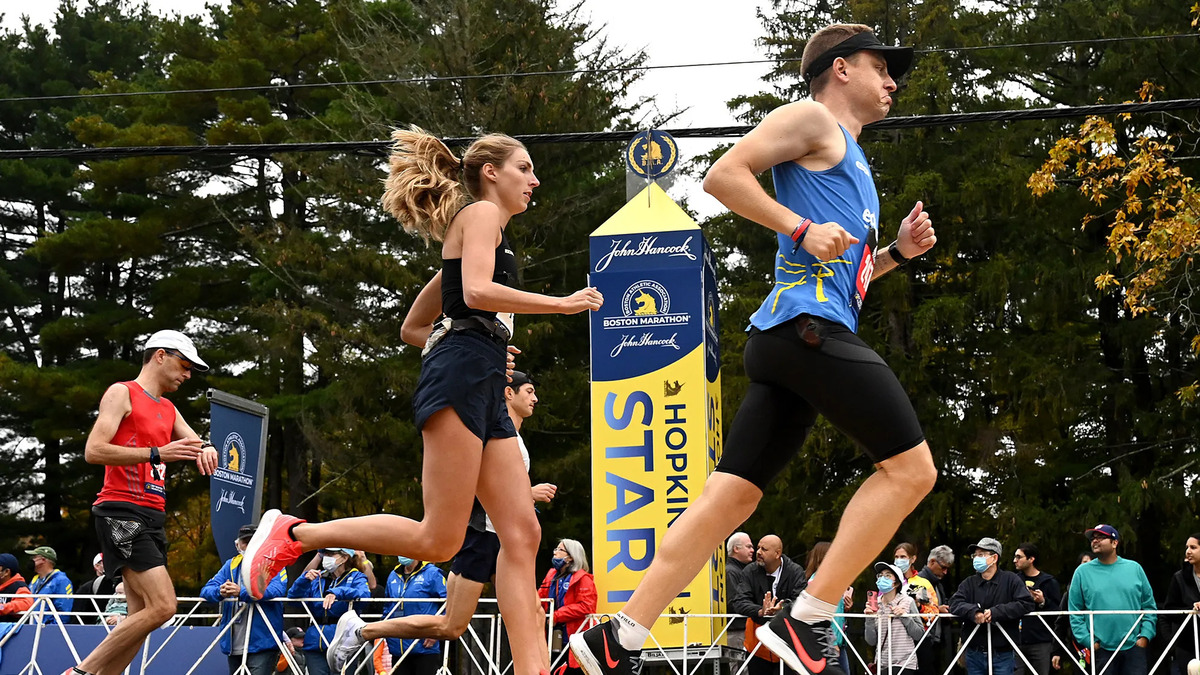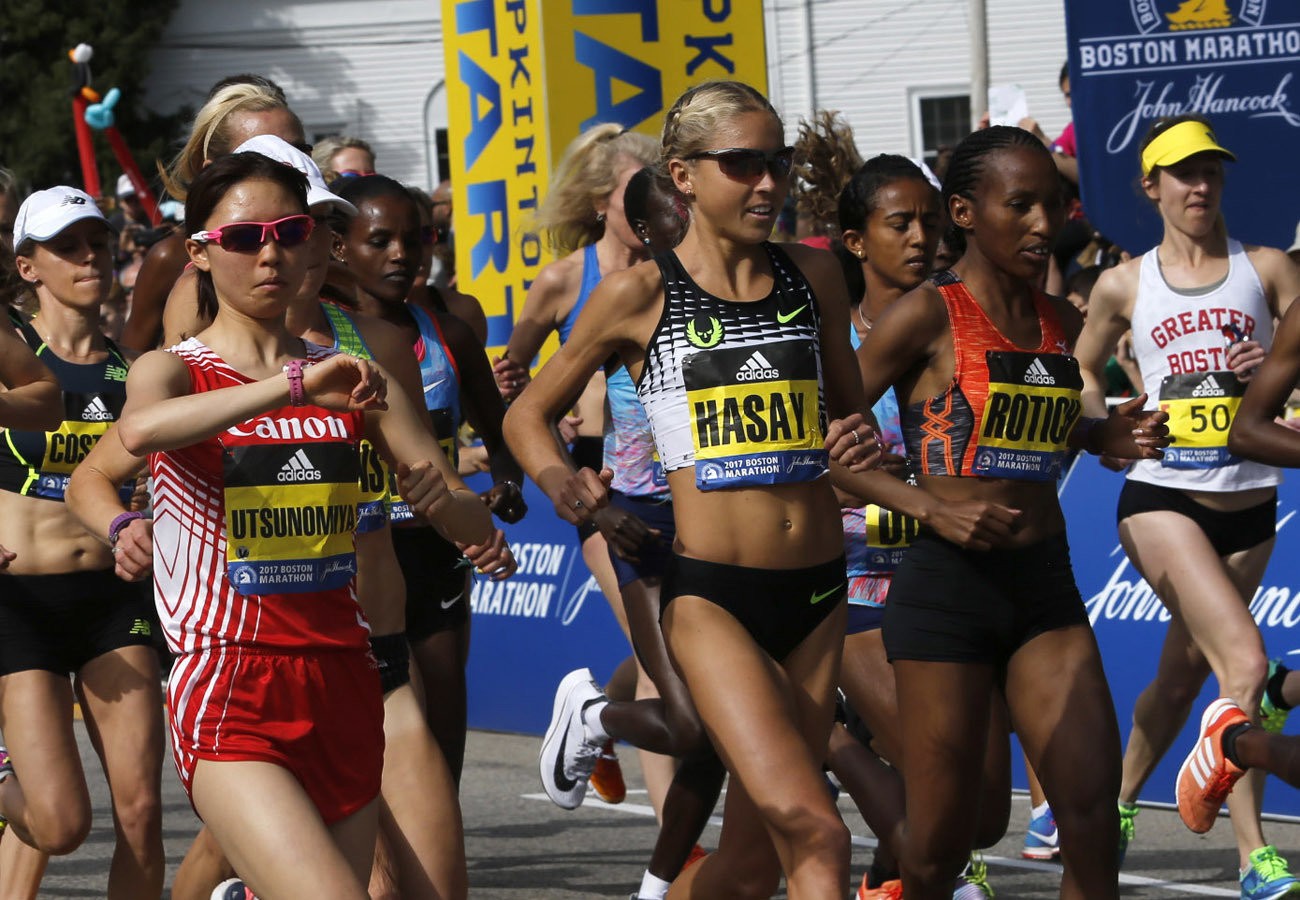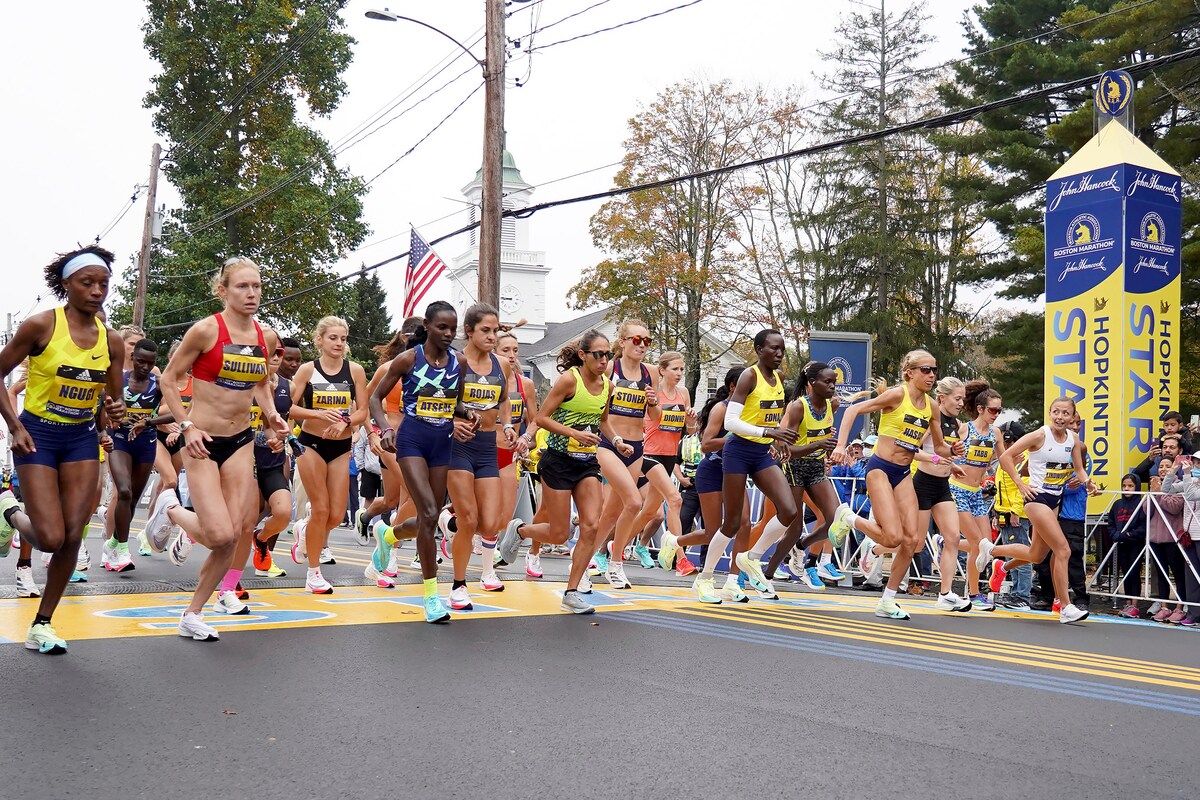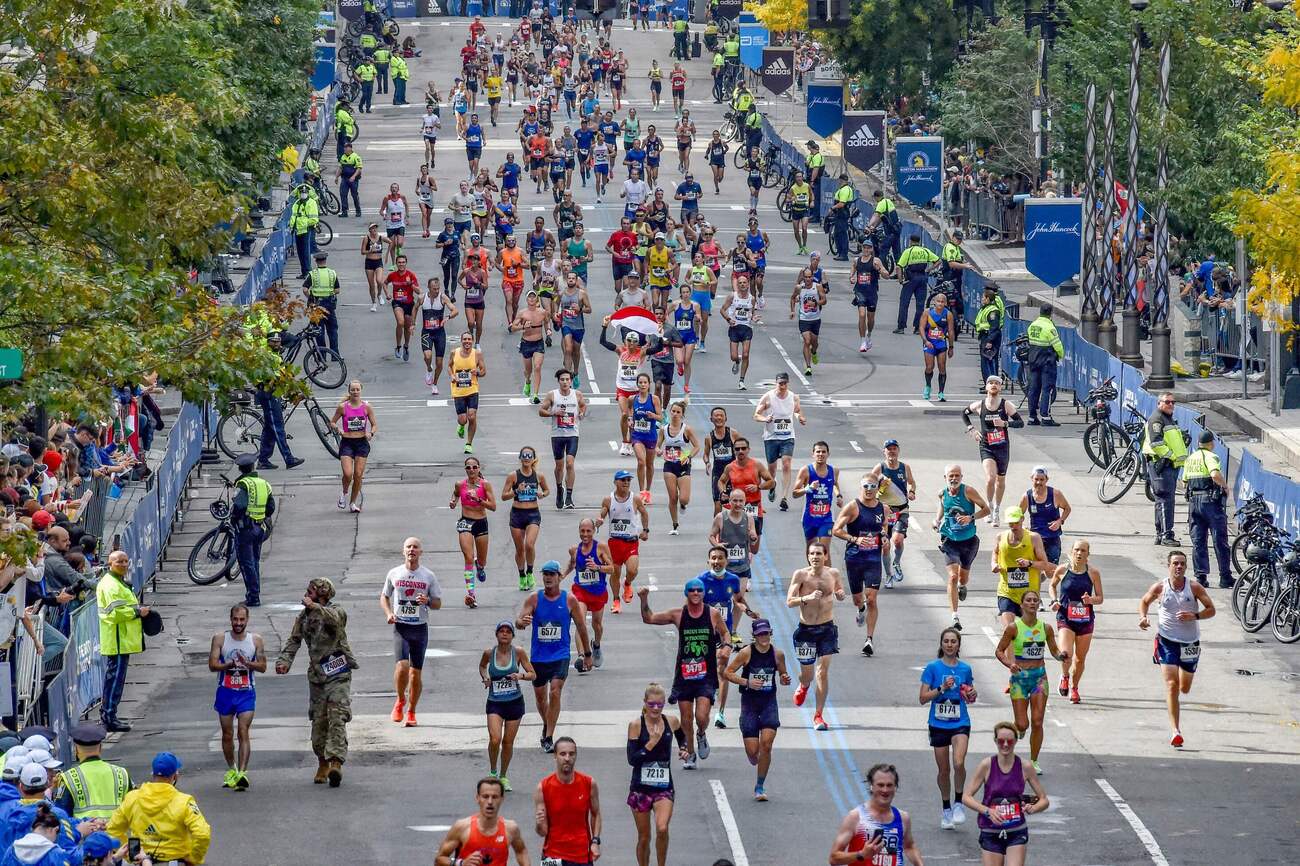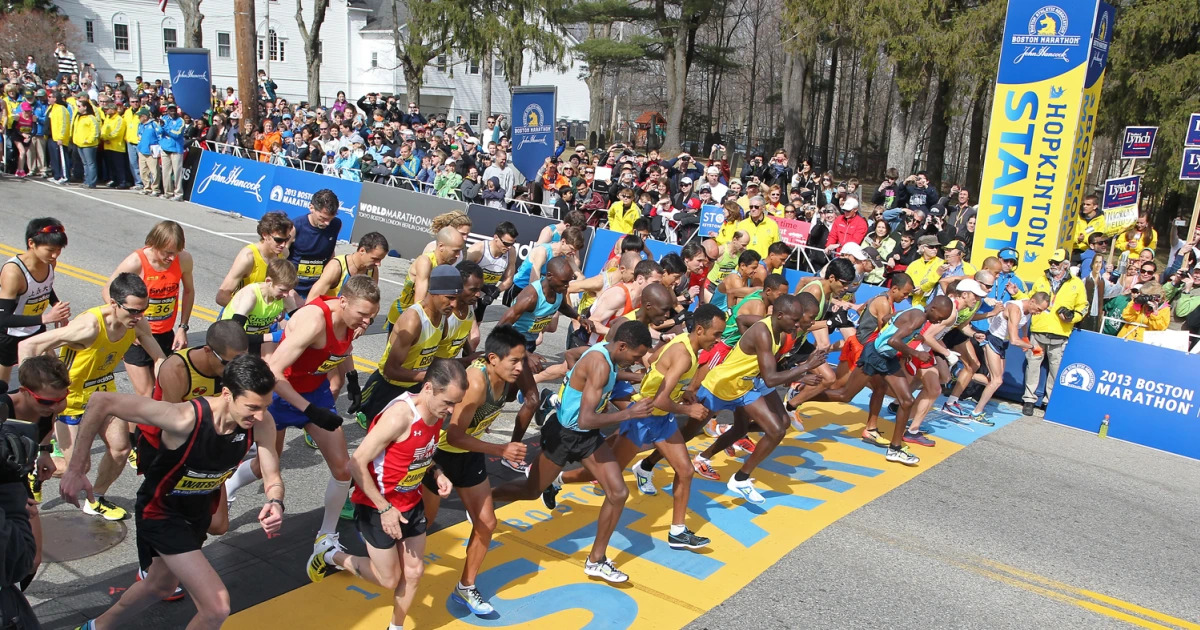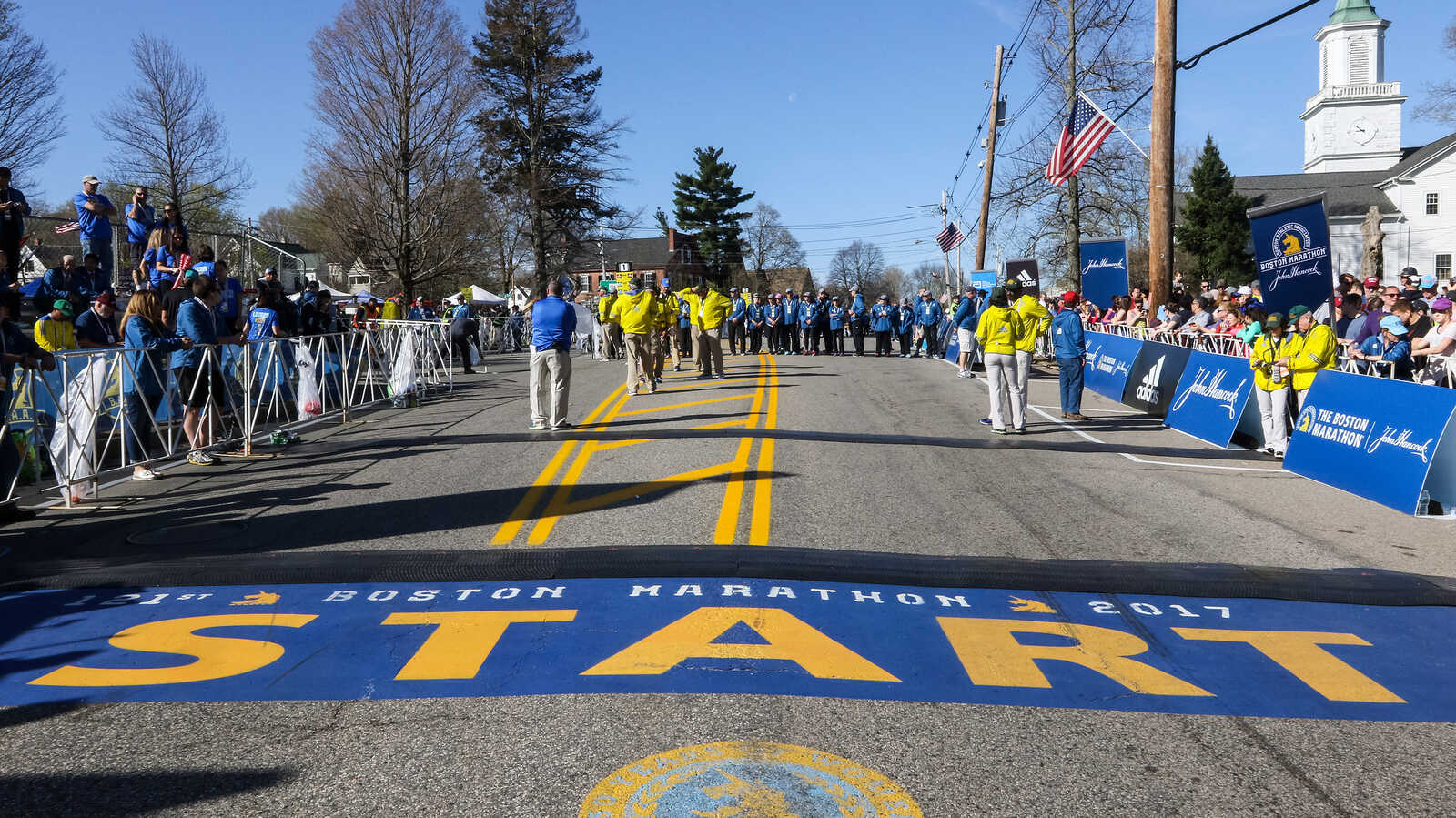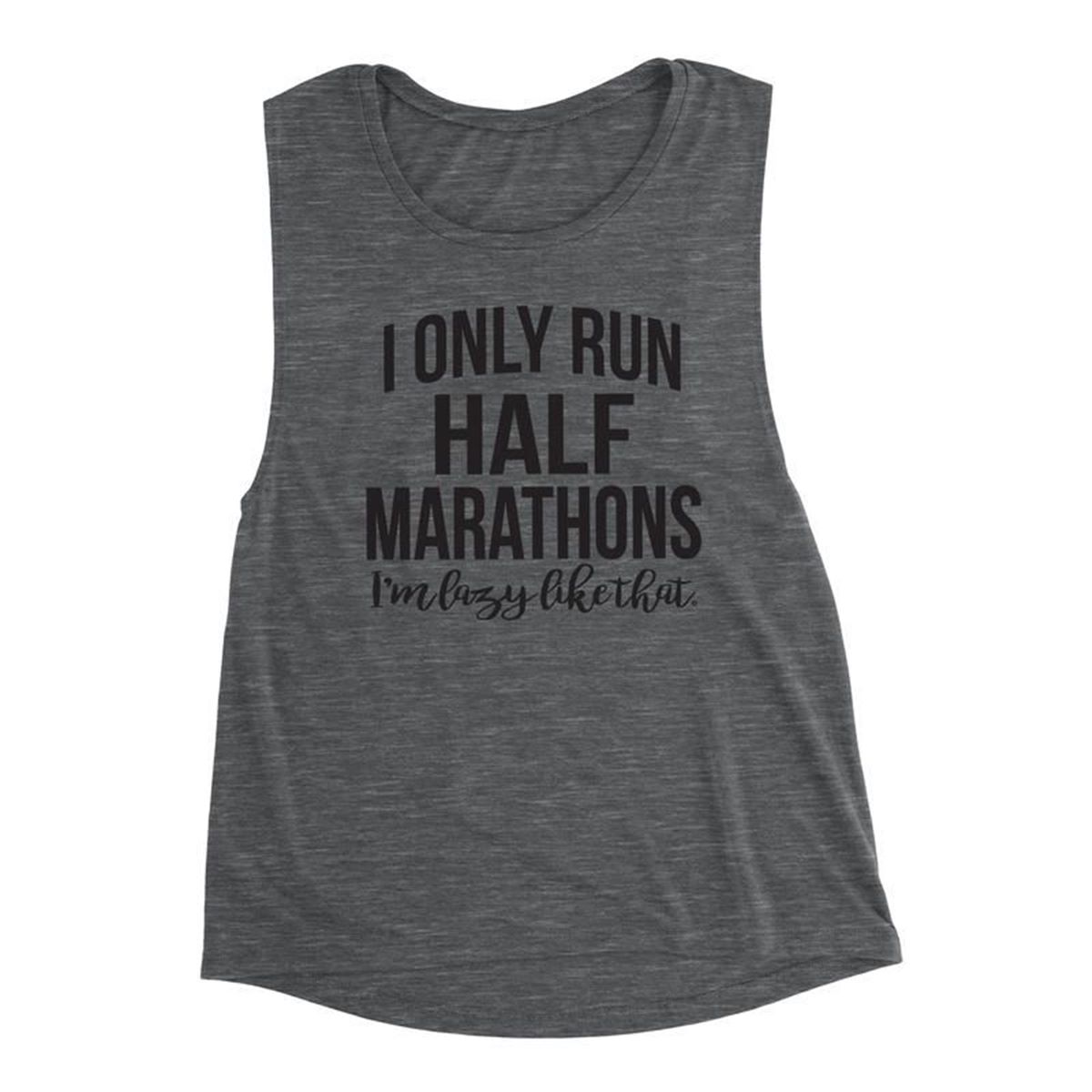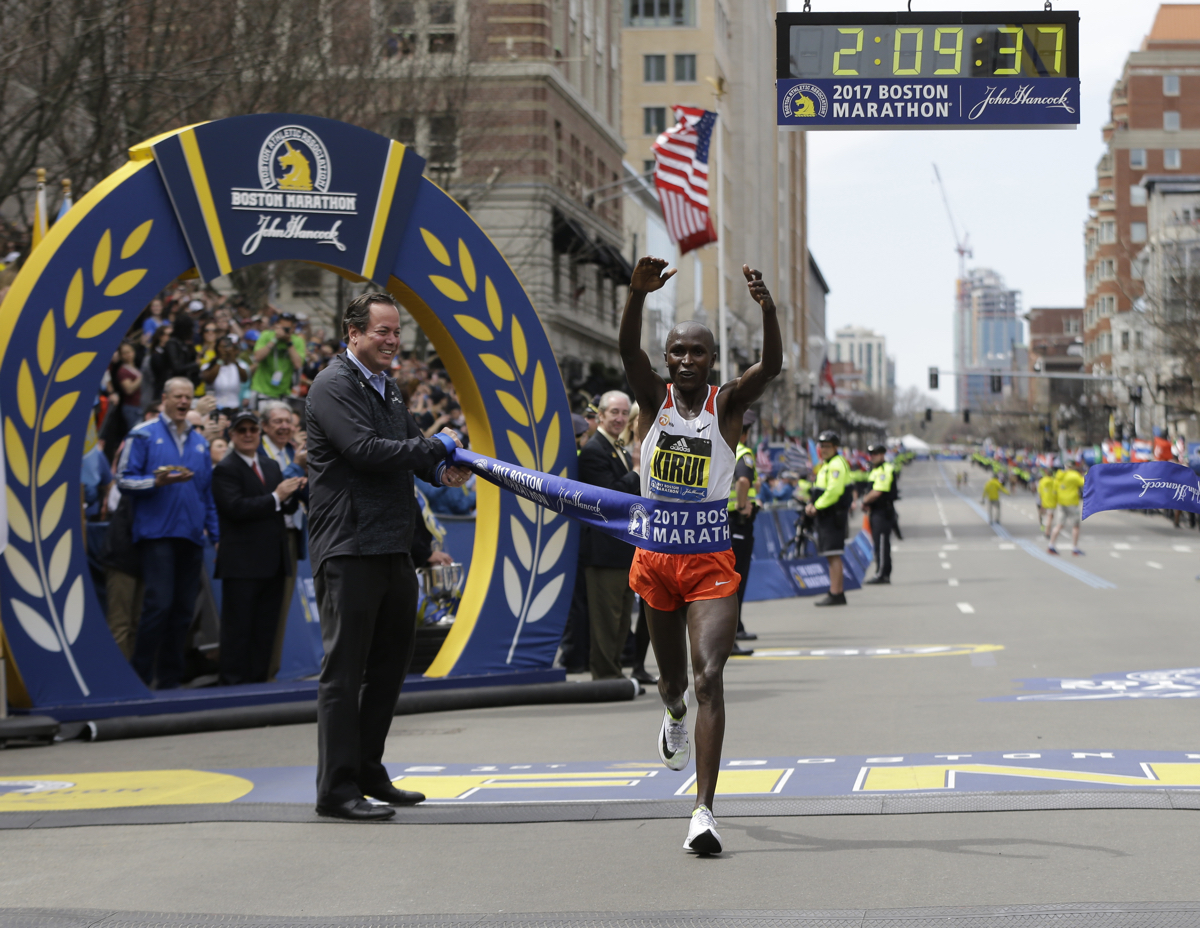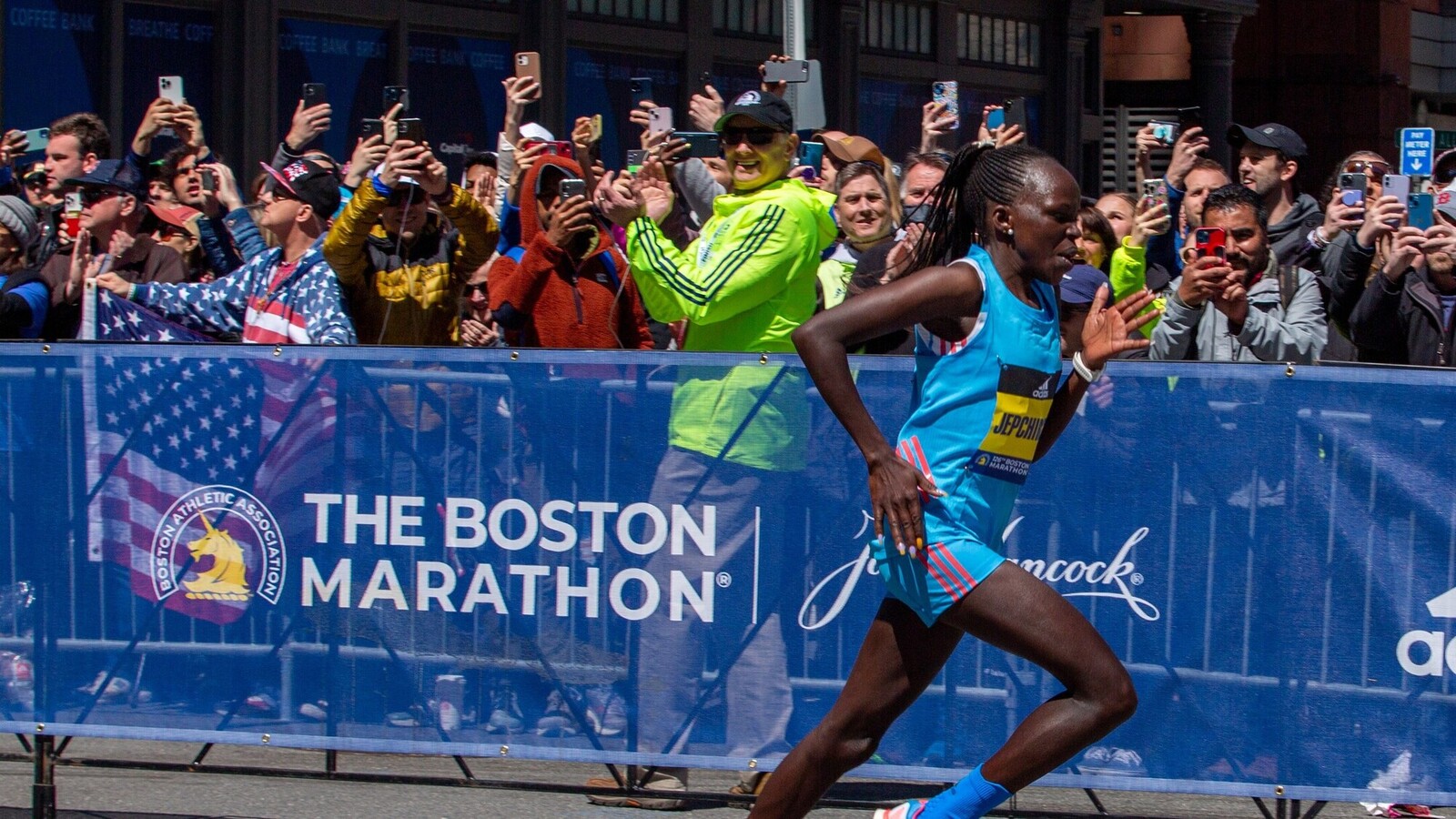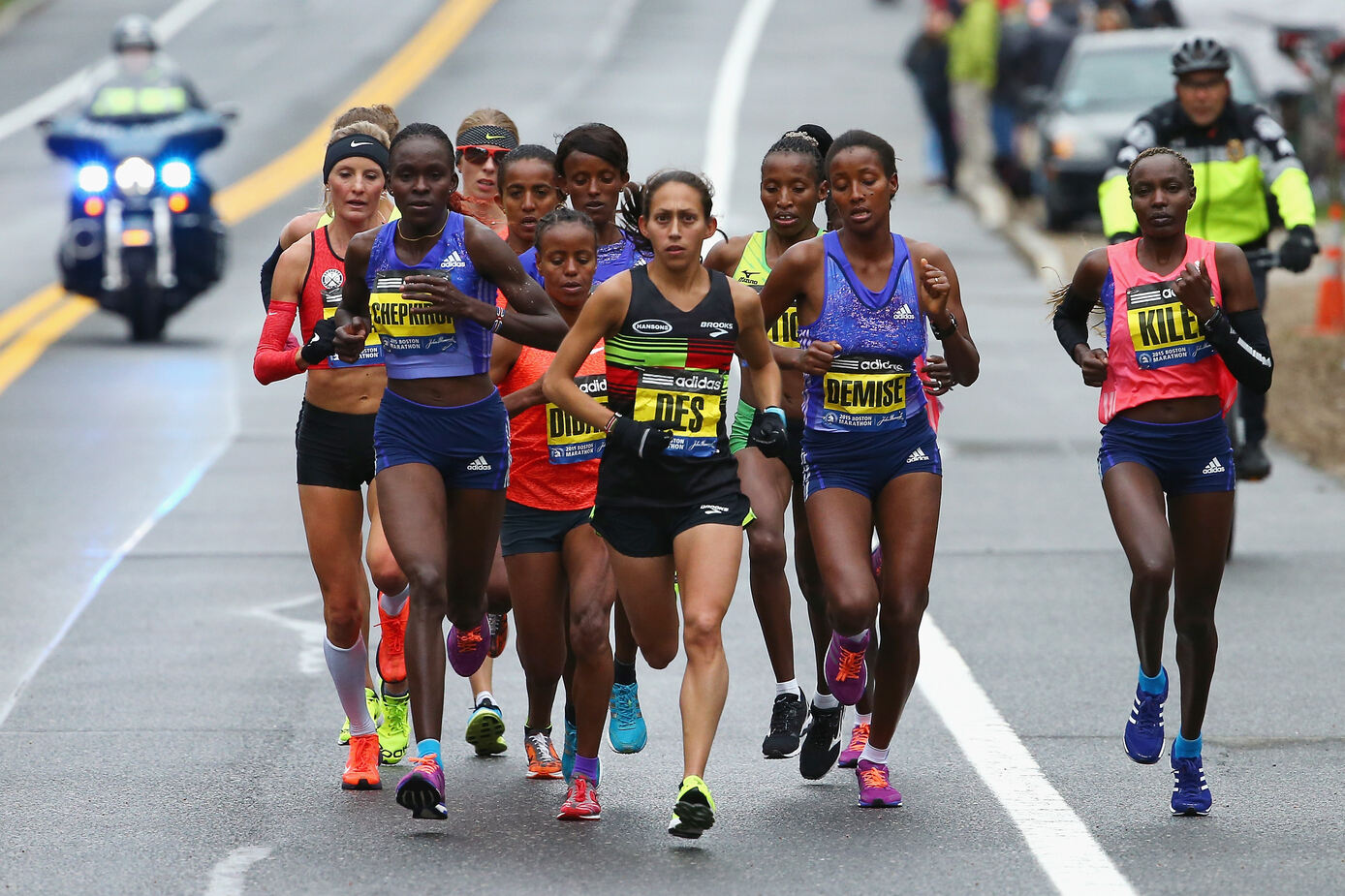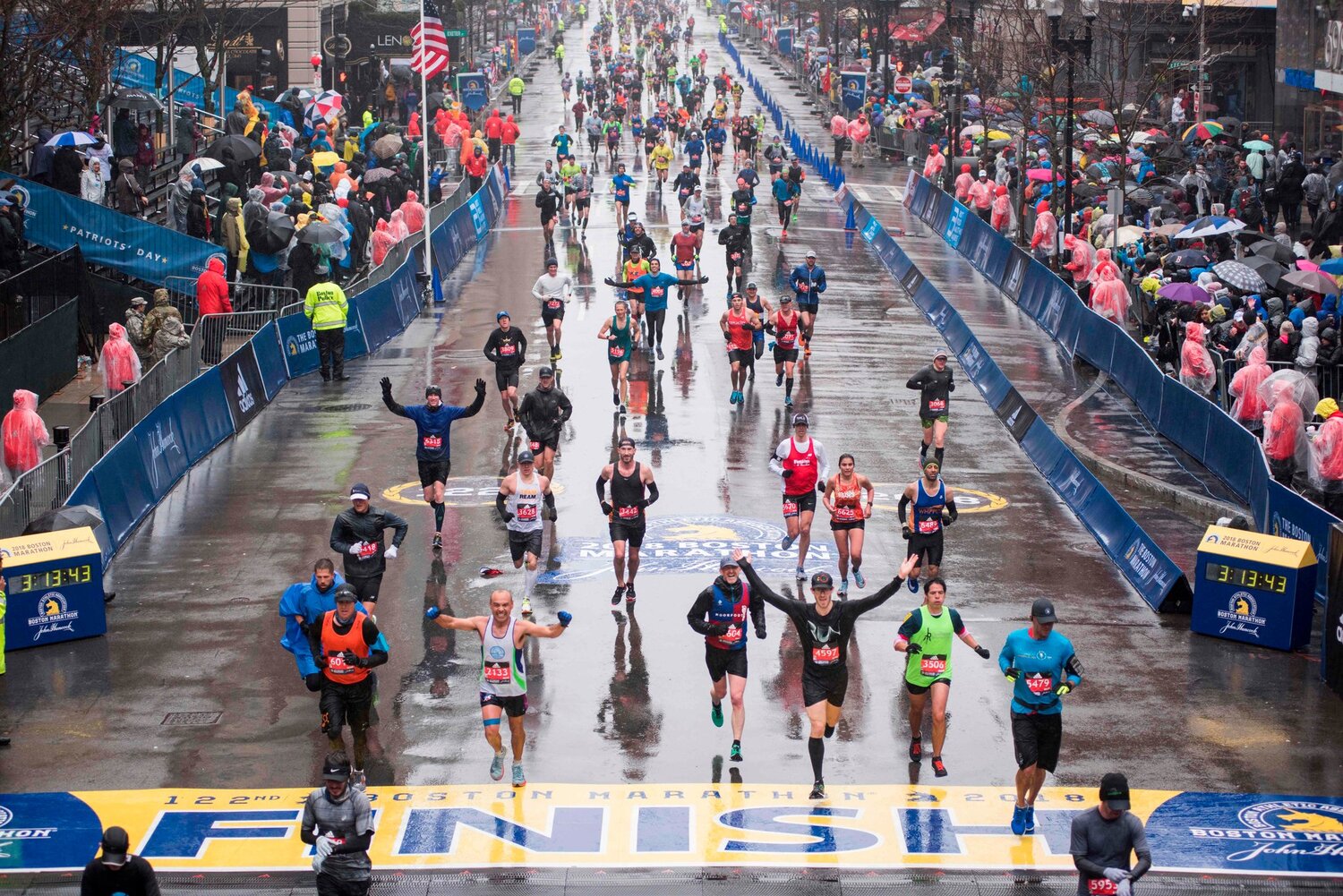

Featured
How To Qualify For The Boston Marathon
Modified: January 2, 2024
Learn how to qualify for the Boston Marathon and become a featured runner. Discover the training strategies and tips to achieve your goal.
Introduction
The Boston Marathon is one of the most prestigious and iconic road races in the world. Known for its challenging course and rich history, it attracts both elite runners and passionate amateurs from around the globe. Qualifying for the Boston Marathon is a major accomplishment and a dream for many runners.
Established in 1897, the Boston Marathon is the oldest annual marathon in the world. It is held on Patriots’ Day, a holiday in Massachusetts, every third Monday in April. The race begins in Hopkinton and finishes in downtown Boston, with a course that spans 26.2 miles (42.195 kilometers).
What sets the Boston Marathon apart from other marathons is its qualifying standards. Unlike most races, which allow anyone to enter as long as they meet an age requirement, in order to participate in the Boston Marathon, you must meet a specific time standard in a qualifying race. This makes the race highly competitive and ensures that only the most dedicated and skilled runners make it to the starting line.
However, qualifying for the Boston Marathon is not only about running a fast time. It also requires careful planning, training, and preparation. This article will guide you through the training requirements, qualifying standards, age groups, and the registration process for the Boston Marathon. By following these steps, you’ll be well on your way to achieving your goal of running in this prestigious race.
Training Requirements
Preparing for the Boston Marathon is a demanding endeavor that requires a well-structured and disciplined training regimen. The race’s challenging course, with its hilly terrain and unpredictable weather, demands that runners be physically and mentally prepared for the grueling 26.2-mile journey.
Training for the Boston Marathon should ideally begin at least four to six months before the race day. It is recommended to have a solid running base, being able to comfortably run at least 30-40 miles per week, before starting a marathon training program.
A well-rounded training plan for the Boston Marathon will include a mix of long runs, speed workouts, tempo runs, hill training, and cross-training. Long runs are crucial for building endurance, and gradually increasing the distance of your long runs over time is essential. Speed workouts, such as interval training and track sessions, help improve your pace and running efficiency.
Tempo runs, also known as “comfortably hard” runs, are done at a steady pace slightly faster than your marathon goal pace. These runs improve your stamina and help you maintain a consistent pace during the race. Hill training is vital for tackling the notorious Newton hills on the Boston Marathon course. Practicing hill repeats and incorporating hill training into your runs will strengthen your leg muscles and improve your overall running form.
In addition to running, cross-training activities like swimming, cycling, or strength training can provide valuable cross-training benefits. These activities help prevent overuse injuries, improve muscular balance, and enhance your overall fitness level.
It’s important to listen to your body during training and allow for adequate rest and recovery. Incorporating rest days and easy runs into your training schedule will help prevent injuries and allow your body to adapt to the increased demands of marathon training.
Another important aspect of training for the Boston Marathon is simulating race conditions. This can involve running portions of the Boston Marathon course, especially the challenging Heartbreak Hill section, or finding similar terrain and conditions in your training runs. This will help you mentally and physically prepare for the race day challenges.
Remember, consistency is key when it comes to training for a marathon. Gradually increase your mileage, incorporate different types of runs, and listen to your body. By following a well-designed training plan and staying committed to your goals, you’ll be well-prepared to meet the qualifying standards and achieve your dream of running the Boston Marathon.
Qualifying Standards
The Boston Marathon has strict qualifying standards that runners must meet in order to participate in the race. These qualifying standards are based on the runner’s age and gender, and they require runners to complete a certified marathon within a specific time frame.
The qualifying standards for the Boston Marathon are designed to ensure that participants are capable of running the race within a reasonable time and to maintain the competitive nature of the event. The standards are regularly updated and can vary from year to year depending on the number of applicants and the capacity of the race.
For most age groups, the qualifying time for the Boston Marathon is based on a specific time standard that must be achieved in a certified marathon. Qualifying times are divided into age groups, with each group having a different standard. The faster qualifying times are typically for younger age groups, while the times are more lenient for older age groups.
For example, as of the 2022 Boston Marathon, the qualifying time for the male 18-34 age group is 3 hours and 0 minutes, while the qualifying time for the female 18-34 age group is 3 hours and 30 minutes. As the age groups increase, the qualifying times also increase. The qualifying times range from 3 hours and 5 minutes for males aged 35-39 to 4 hours and 30 minutes for males aged 70-74. For females in the same age group, the qualifying times range from 3 hours and 35 minutes to 5 hours and 0 minutes.
It is important to note that qualifying times and standards can change from year to year, and it’s essential to verify the specific standards and requirements for the year you are planning to participate in the Boston Marathon.
Once you have achieved a qualifying time, you can submit your application to the Boston Athletic Association (B.A.A.) for verification and registration. The B.A.A. will review your qualifying time and confirm your eligibility to participate in the race.
It’s worth noting that meeting the qualifying standards does not guarantee entry into the Boston Marathon. The number of qualified applicants exceeds the available spots, and therefore, the B.A.A. implements a registration process that prioritizes the fastest qualifying runners in each age group. This means that even if you meet the qualifying standard, you may not be accepted into the race if there are too many applicants.
Qualifying for the Boston Marathon is a challenging goal, but with dedication, training, and perseverance, it is possible to meet the standards and earn your spot on the starting line of this prestigious race.
Age Groups and Times
The Boston Marathon has specific age groups and corresponding qualifying times that runners must meet in order to participate in the race. These age groups are based on the runner’s age on the day of the Boston Marathon.
The age groups for the Boston Marathon start at 18 years old and increase in five-year increments, with the oldest age group being 80 years old and older. Each age group has its own qualifying time, which is based on the principle that as runners age, their performance may naturally decline.
The qualifying times for each age group are designed to be challenging yet attainable for runners in that particular age range. The faster qualifying times are typically for younger age groups, while the times become more lenient as the age groups increase.
Here are some examples of the qualifying times for different age groups as of the 2022 Boston Marathon:
- 18-34 years old: For males, the qualifying time is 3 hours and 0 minutes. For females, the qualifying time is 3 hours and 30 minutes.
- 35-39 years old: For males, the qualifying time is 3 hours and 5 minutes. For females, the qualifying time is 3 hours and 35 minutes.
- 40-44 years old: For males, the qualifying time is 3 hours and 10 minutes. For females, the qualifying time is 3 hours and 40 minutes.
- 45-49 years old: For males, the qualifying time is 3 hours and 20 minutes. For females, the qualifying time is 3 hours and 50 minutes.
- 50-54 years old: For males, the qualifying time is 3 hours and 25 minutes. For females, the qualifying time is 4 hours and 0 minutes.
The qualifying times continue to increase as the age groups progress. The full list of age groups and their corresponding qualifying times can be found on the official Boston Marathon website.
It’s important to note that these qualifying times may change from year to year, based on factors such as the number of applicants and the capacity of the race. Therefore, it’s essential to refer to the most up-to-date qualifying standards provided by the Boston Athletic Association (B.A.A.) when planning to qualify for the Boston Marathon.
Meeting the qualifying time for your specific age group is a significant achievement. It demonstrates your dedication and commitment to running and allows you to enter the elite group of runners who have earned the opportunity to participate in the Boston Marathon.
Boston Marathon Registration
Registering for the Boston Marathon is a highly anticipated process that requires careful planning and attention to detail. Due to the popularity and prestige of the race, the registration process is structured to ensure fairness and accommodate the large number of applicants vying for a limited number of spots.
The registration for the Boston Marathon is done through the Boston Athletic Association (B.A.A.), the organization responsible for organizing the race. The B.A.A. typically opens registration several months prior to the race day and provides a specific registration period during which interested runners can submit their applications.
For qualifying runners, the registration process follows a rolling admission format. The fastest qualifiers in each age group get the earliest access to register, followed by those who have achieved a qualifying time within a certain range of the standard. The B.A.A. establishes cutoff times based on the number of available spots, and as long as you have achieved a qualifying time, you have a chance to be accepted based on these cutoff times.
It’s worth noting that meeting the qualifying time does not guarantee entry into the Boston Marathon. If there are more qualified applicants than available spots, the B.A.A. uses a registration process that prioritizes the fastest qualifiers in each age group. This means that even if you meet the qualifying standard, you may not be accepted if your qualifying time falls below the established cutoff times.
Registration for the Boston Marathon requires careful planning because the field size is limited, and the demand to participate is high. It’s advisable to submit your application as soon as the registration process opens for your qualifying time range. This increases your chances of securing a spot before the race reaches its capacity.
Once accepted, runners are required to pay an entry fee to confirm their registration. The entry fee covers the cost of participation and supporting the race organization. The fees are determined by the B.A.A. and are subject to change from year to year.
In the event that you are not accepted during the initial registration process, the B.A.A. provides a waitlist option for a limited number of runners. This gives runners who missed out on initial registration another opportunity to participate if spots become available due to withdrawals or cancellations.
The Boston Marathon registration process is highly competitive, but with dedication, perseverance, and careful planning, you can increase your chances of securing a spot in this prestigious race. It’s important to stay updated on the registration dates and requirements by visiting the official Boston Marathon website and following the announcements from the B.A.A.
Preparing for the Race
Preparing for the Boston Marathon requires more than just physical training. It involves a holistic approach that encompasses mental preparation, race strategy, nutrition, gear selection, and logistics. With careful planning and attention to detail, you can optimize your performance and ensure a successful race day experience.
Mental preparation is crucial for a marathon of this magnitude. Visualize yourself crossing the finish line and envision the challenges you may face along the way. Develop a positive mindset, stay focused, and maintain a strong belief in your abilities. Mental toughness and confidence can help you overcome the physical demands of the race.
Creating a race strategy is essential to maximize your performance. Familiarize yourself with the Boston Marathon course, including the elevation profile and key landmarks. Plan how you will approach each section of the course, including the notorious Newton hills. Pace yourself accordingly and aim to maintain a consistent effort throughout the race.
Nutrition plays a critical role in race preparation. Follow a balanced and healthy diet leading up to the race, focusing on carbohydrates for energy, lean proteins for muscle recovery, and healthy fats for overall nutrition. Practice your nutrition strategy during long training runs to refine your fueling plan and ensure your body can sustain the demands of a marathon.
Choosing the right gear is also important. Invest in a comfortable pair of running shoes that provide adequate support and cushioning for the duration of the race. Wear moisture-wicking clothing to keep you dry and comfortable. Test your gear during training to avoid any surprises or discomfort on race day.
Logistics planning is crucial to ensure a smooth race day experience. Familiarize yourself with the race day schedule, transportation options to the starting line, and the location of aid stations along the course. Plan your pre-race routine, including what you will eat for breakfast, how you will warm up, and when you will arrive at the starting line.
Lastly, it’s important to prioritize rest and recovery in the days leading up to the race. Gradually taper your training volume to allow your body to recover and rebuild its energy stores. Get plenty of sleep, hydrate well, and avoid any strenuous activities that may increase the risk of injury or fatigue before race day.
By taking a comprehensive approach to preparing for the Boston Marathon, you can optimize your performance and enhance your overall race day experience. With the right mindset, training, nutrition, gear, and logistical planning, you’ll be well-equipped to conquer the challenges of this iconic race.
Conclusion
The Boston Marathon is a race that holds a special place in the hearts of runners worldwide. Qualifying for and participating in this iconic event requires dedication, discipline, and meticulous planning. From training requirements and qualifying standards to age groups and registration, every aspect of the Boston Marathon journey is carefully designed to maintain the race’s prestigious nature.
Training for the Boston Marathon involves a well-structured program that includes long runs, speed workouts, hill training, and cross-training. Simulating race conditions by incorporating challenging terrain and conditions into your training will prepare you for the demanding course.
Understanding the qualifying standards for your age group and accomplishing the required times in a certified marathon is a significant achievement. However, meeting the standards is just the first step. Registering for the Boston Marathon during the designated registration period and paying the entry fee are essential to secure your spot on race day.
Preparing for the Boston Marathon goes beyond physical training. Mental preparation, race strategy, nutrition, gear selection, and logistics all play crucial roles in optimizing performance and ensuring a successful race day experience.
In conclusion, qualifying for and participating in the Boston Marathon is not only a test of physical endurance but also a demonstration of dedication, determination, and the love of running. By following a well-designed training plan, meeting the qualifying standards, and approaching the race with a focused mindset, you can fulfill your goal of running the Boston Marathon. Embrace the challenge, cherish the experience, and join the elite group of runners who have conquered the historic streets of Boston.
